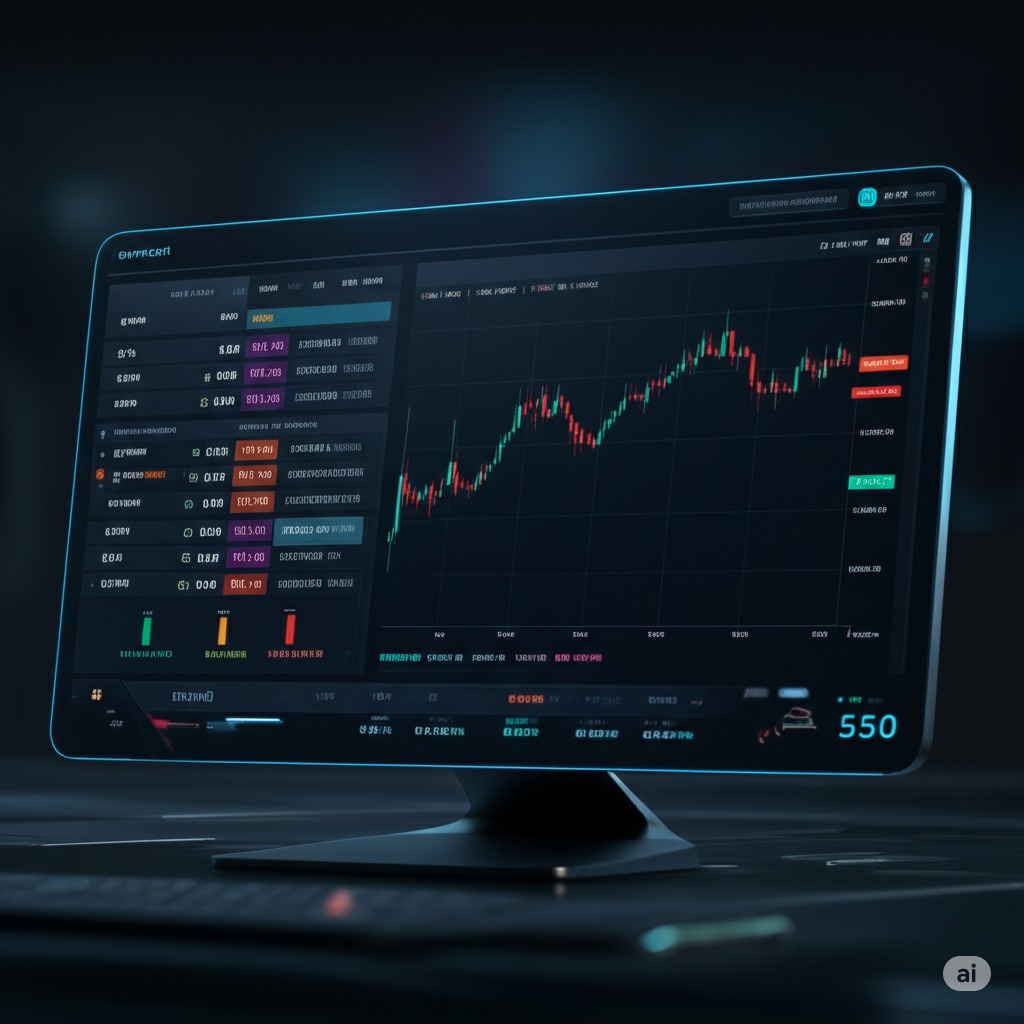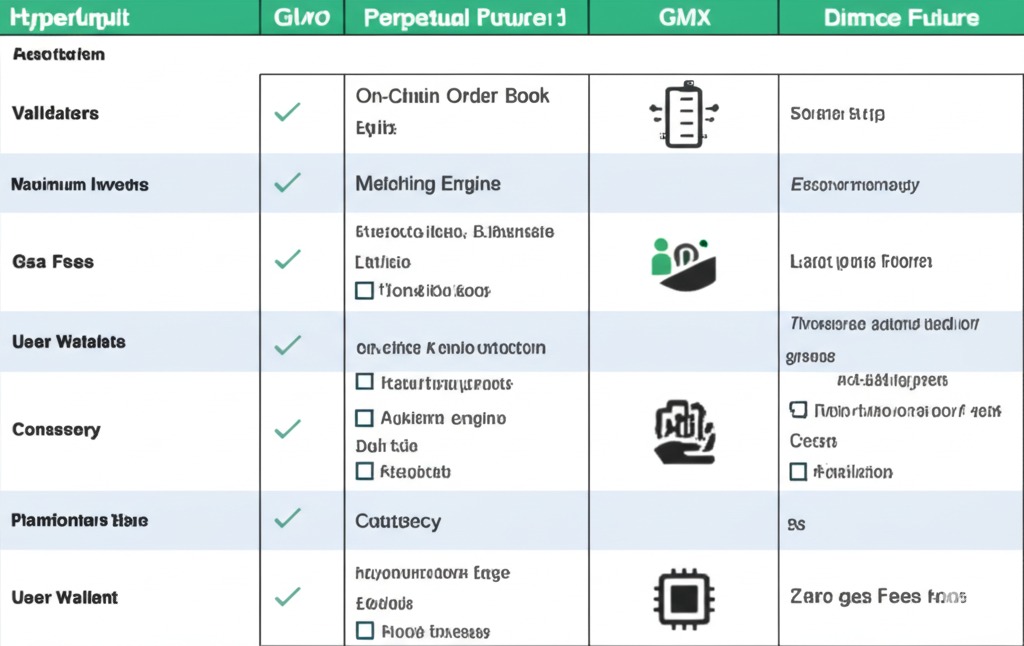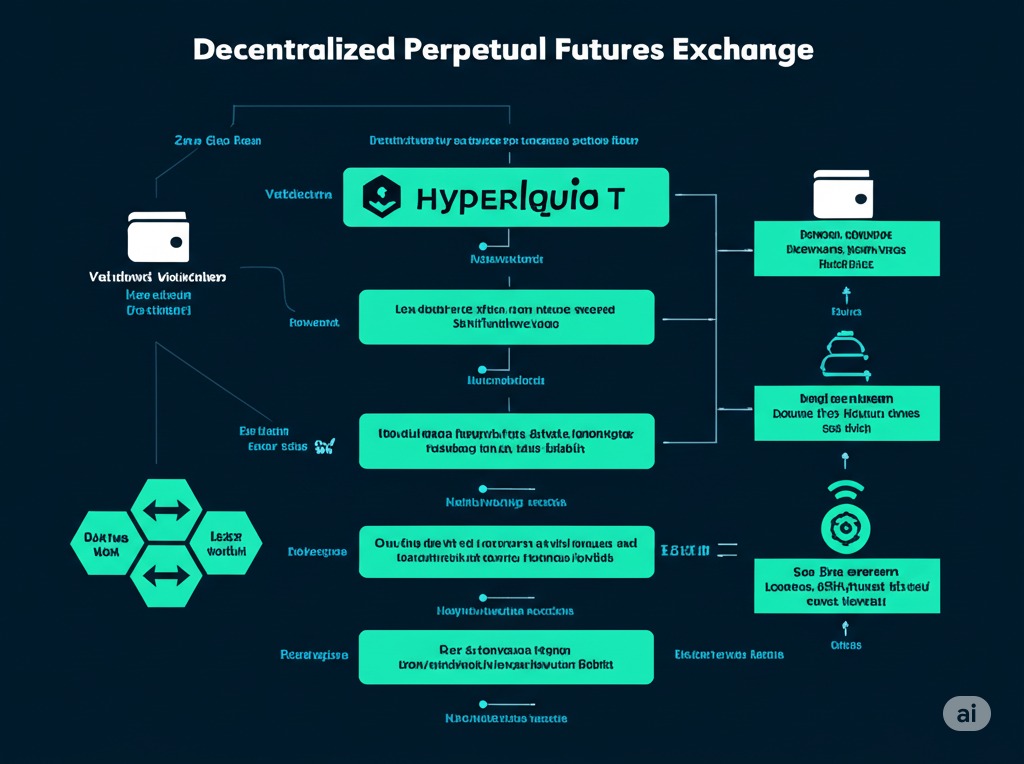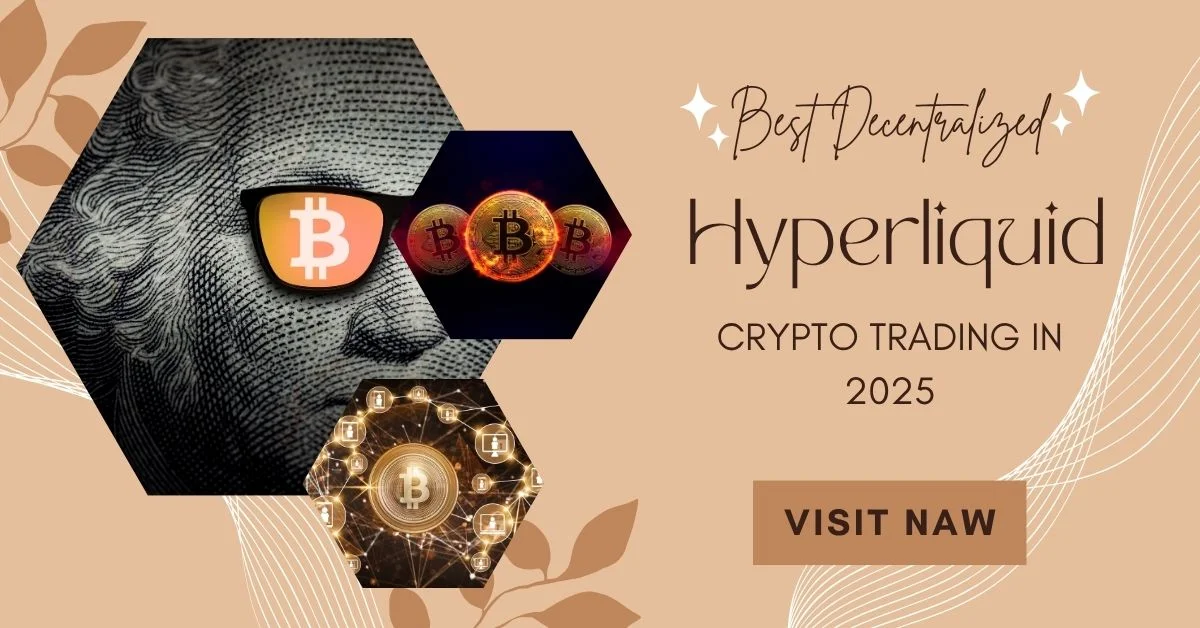Hyperliquid is the leading decentralized perpetual futures exchange in 2025, offering zero gas fees, ultra-fast order execution, and up to 50x leverage for seamless crypto trading. Discover how this gasless, non-custodial platform empowers traders with advanced on-chain technology and unparalleled speed.
Introduction to Hyperliquid
In the fast-paced world of cryptocurrency, a new decentralized perpetual futures exchange is drawing considerable attention—Hyperliquid. As the demand for non-custodial trading solutions grows, Hyperliquid emerges as a high-performance alternative to centralized platforms, offering zero gas fees, ultra-low latency, and lightning-fast execution.
1. What Is Hyperliquid?
Hyperliquid is a Layer-1 decentralized perpetual futures exchange built from the ground up to optimize speed, scalability, and decentralization. Unlike other decentralized exchanges (DEXs) that rely on Layer-2 scaling or Ethereum-based smart contracts, Hyperliquid introduces a custom Layer-1 blockchain designed specifically for trading derivatives.
Key Highlights:
- ✅ Fully on-chain order book and matching engine
- 🚫 Zero gas fees for trading
- ⚡ Sub-100ms latency on orders
- 📈 Supports perpetual futures with up to 50x leverage
- 🌐 Entire infrastructure is decentralized (validators, state, order books)

2. Hyperliquid vs Other Platforms: A Comparative Table
| Feature | Hyperliquid | dYdX (v4) | GMX (v2) | Binance Futures |
|---|---|---|---|---|
| Architecture | Custom Layer-1 | Cosmos SDK | Arbitrum / Avalanche | Centralized |
| Order Matching | Fully on-chain | Off-chain | AMM | Off-chain |
| Gas Fees | None | None | Minimal (network fee) | None |
| Max Leverage | 50x | 20x | 50x | 125x |
| Custody | Non-custodial | Non-custodial | Non-custodial | Custodial |
| Token | HLP (unconfirmed) | DYDX | GMX / GLP | BNB |
| Community Governance | Planned | Active | Active | Limited |
| Target Users | Pro Traders, Institutions | Active Traders | Swing Traders | All Levels |
3. Core Features of Hyperliquid
Hyperliquid is designed with an advanced set of capabilities that make it both user-friendly and infrastructure-rich.
3.1 Zero Gas Trading
Hyperliquid’s custom blockchain eliminates the need for Layer-2 or Ethereum gas fees. This opens up:
- Rapid onboarding for new users
- High-frequency trading without capital erosion
- Lower costs for algorithmic traders and bots
3.2 On-Chain Orderbook & Matching Engine
Unlike other DEXs that use Automated Market Makers (AMMs), Hyperliquid has a true on-chain central limit order book (CLOB). This results in:
- Greater price transparency
- Tighter spreads
- Lower slippage on large orders
3.3 Real-Time Performance
- Average latency: ~80ms
- Orders are confirmed in real-time
- Ideal for scalpers and arbitrage traders
3.4 Cross-Margin and Isolated Margin
Traders can choose between:
- 🔁 Cross-Margin: Uses all account equity
- 🔒 Isolated Margin: Limits risk to a specific trade
3.5 Built-In Liquidation Engine
A decentralized liquidation system ensures fairness while minimizing toxic order flow risks.
4. Tokenomics: Is There a Token?
At the time of writing, Hyperliquid has no officially launched token. However, speculations suggest that an HLP token may be introduced, potentially with:
- Governance rights
- Staking rewards
- Fee rebates
- Validator incentives
Tip for Traders:
Active trading or staking could qualify users for a future airdrop, as seen with dYdX, Arbitrum, and Blast.
5. How To Use Hyperliquid
Here’s a simple 5-step guide to getting started with Hyperliquid:
Step-by-Step Guide:
- Visit the Official Site: https://app.hyperliquid.xyz
- Connect Wallet: MetaMask, WalletConnect, or Ledger
- Deposit Funds: Use native bridging or third-party tools
- Select Market: Choose from BTC, ETH, SOL, or altcoin perpetuals
- Place Order: Set limit/market orders with up to 50x leverage
6. Who Should Use Hyperliquid?
Ideal User Profiles:
- Day Traders: Looking for high-speed execution
- DeFi Natives: Comfortable with self-custody and wallets
- Institutions: Interested in non-custodial infrastructure
- Arbitrageurs: Leverage latency advantages
7. Benefits of Using Hyperliquid
✔️ Non-Custodial: You control your funds
✔️ Low Fees: Zero gas trading environment
✔️ No KYC: Preserve privacy and freedom
✔️ Scalability: Designed for high throughput
✔️ On-chain Transparency: All trades are verifiable
8. Challenges & Risks
While Hyperliquid presents significant innovations, certain challenges persist:
- 🔍 Smart Contract Risks: As with any DEX, code vulnerabilities can be exploited
- 🧪 New Platform: Lacks the battle-tested resilience of older DEXs
- 🚧 Liquidity Depth: Lower than Binance or OKX in early stages
- ❌ No Mobile App (as of now)
Future Outlook: What’s Next for Hyperliquid?
Hyperliquid is rapidly gaining traction in the DeFi trading ecosystem. Upcoming developments could include:
- 📱 Mobile App Launch
- 🪙 Token Launch (HLP) with Airdrop
- 🧱 New Perpetual Markets (Meme Coins, AI Tokens)
- 🧠 AI-Powered Trading Assistance Tools
- 🧾 Integration with Tax Reporting Tools (Koinly, ZenLedger)
Hyperliquid Price Prediction 2020-2030: What to Expect
Important Note:
As of now, Hyperliquid does not have an official token launched (e.g., HLP). Therefore, the following is a hypothetical forecast based on market trends, competitor analysis, and industry growth patterns related to decentralized perpetual futures exchanges and their native tokens.
1. Background: No Token in 2020-2023
- 2020-2023: Hyperliquid was in development or early testnet stages with no token released.
- No trading price or market cap data exists for these years.
- Crypto derivatives platforms like dYdX and GMX launched tokens later, setting a precedent.
2. Hypothetical Token Launch Period: 2024-2025
- Many expect Hyperliquid to launch a governance/trading token (HLP) around this period.
- Launch Price Estimate: $0.50 – $1.50 per token (based on comparable projects).
- Early airdrops or rewards could incentivize initial users.
Key Factors Impacting Initial Price:
- Market sentiment around DeFi and derivatives
- User adoption and trading volume
- Token utility (governance, staking rewards)
- Overall crypto market cycle (bull or bear)
3. Mid-Term Growth: 2026-2028
- If adoption grows, token price could appreciate significantly.
- Projected Price Range: $5 to $15 per token by 2028, assuming:
- Increasing trading volume and liquidity
- Expansion of supported assets (BTC, ETH, altcoins)
- Integration with other DeFi protocols
- Enhanced features like AI trading tools and mobile apps
Market Risks:
- Competition from centralized exchanges (Binance, FTX-type platforms)
- Regulatory hurdles on derivatives trading
- Security or smart contract risks
4. Long-Term Outlook: 2029-2030
- If Hyperliquid becomes a dominant player in decentralized perpetual futures:
- Price could reach $20 to $50+ per token based on:
- Mass adoption of decentralized trading globally
- Regulatory clarity favoring decentralized finance
- Expansion into institutional trading and cross-chain markets
Macro Factors:
- Global economic conditions impacting crypto demand
- Technological breakthroughs improving blockchain throughput
- Competitor landscape and market consolidation

5. Summary Table: Hypothetical Price Timeline
| Year | Price Range (USD) | Key Drivers | Risks |
|---|---|---|---|
| 2020-2023 | $0 (No Token) | Development phase, no trading token | Lack of liquidity, no market data |
| 2024-2025 | $0.50 – $1.50 | Token launch, early adoption incentives | Low awareness, market volatility |
| 2026-2028 | $5 – $15 | Growing adoption, expanding features | Regulatory scrutiny, competition |
| 2029-2030 | $20 – $50+ | Market leader status, institutional entry | Macro market crashes, tech risks |
6. Important Considerations for Investors
- DYOR (Do Your Own Research): Prices depend on many unpredictable factors.
- Volatility: Crypto assets, especially new tokens, can be highly volatile.
- Regulations: Laws around derivatives and crypto exchanges can impact token viability.
- Token Utility: The actual use case of the token will heavily influence its value.
8. Additional Crucial Insights on Hyperliquid’s Price & Future
8.1 Tokenomics Clarity & Governance Model
- A clear, transparent tokenomics model is critical. Investors look for:
- Total supply cap and token distribution plan
- Vesting schedules preventing early dumps
- Governance rights that empower community involvement
- Absence of these details can cause price stagnation or volatility.
8.2 Liquidity Mining & Incentives
- Launching strong liquidity mining programs often fuels early price growth.
- Programs that reward both traders and liquidity providers help build sustainable volume.
8.3 Interoperability and Cross-Chain Compatibility
- Supporting multi-chain assets can exponentially increase user base and token demand.
- Projects that remain Ethereum-only or single-chain often face growth ceilings.
8.4 Regulatory Environment Impact
- Increased regulatory scrutiny on derivatives markets globally can either:
- Limit accessibility, suppressing price growth
- Or, clarify legality, boosting institutional adoption and prices
8.5 Competition & Market Positioning
- Hyperliquid must continually innovate to stay competitive against:
- Established players like dYdX, GMX, and Binance Futures
- Emerging decentralized perpetual platforms
8.6 Security Audits and Smart Contract Safety
- Regular, comprehensive security audits by top firms improve investor confidence.
- History of no major exploits or bugs is essential for long-term price appreciation.
8.7 Market Sentiment and Crypto Cycles
- Crypto markets are cyclical with bullish and bearish phases that significantly affect token prices.
- Early investors should anticipate volatility and plan entry/exit strategies accordingly.
8.8 Community and Developer Engagement
- Strong community support and active developer involvement usually drive platform adoption and token demand.
- Transparent roadmaps and frequent updates positively influence price trends.

9. Pro Tips for Potential Investors & Traders
- Stay Informed: Follow Hyperliquid’s official channels (Twitter, Discord, GitHub).
- Use Demo/Testnet: Familiarize yourself with the platform before committing capital.
- Diversify: Don’t put all funds into one token; spread risk across assets.
- Set Realistic Expectations: No project is a guaranteed moonshot; plan for risks.
- Watch Volume & Liquidity: Healthy trading volume often precedes price surges.
7. Conclusion
While Hyperliquid shows immense promise as a next-generation decentralized perpetual futures exchange, the price prediction for its token remains speculative until official announcements and launches happen. Investors should monitor:
- Official Hyperliquid communications
- DeFi market trends
- Broader crypto derivatives sector developments
Trending FAQs About Hyperliquid
1. What is Hyperliquid?
Hyperliquid is a decentralized Layer-1 perpetual futures exchange offering gasless trading, high-speed order execution, and up to 50x leverage, designed to compete with platforms like dYdX and GMX.
2. Does Hyperliquid have its own token?
As of now, Hyperliquid has not officially launched a native token, but a token release (often called HLP) is anticipated to provide governance and staking benefits.
3. How does Hyperliquid differ from other perpetual DEXs?
Unlike many DEXs that use AMMs or Layer-2 solutions, Hyperliquid runs on a custom Layer-1 blockchain with a fully on-chain order book and zero gas fees for traders.
4. Is trading on Hyperliquid safe?
Hyperliquid uses decentralized smart contracts and is subject to security audits. However, like all crypto platforms, users should exercise caution and use proper risk management.
5. Can U.S. residents trade on Hyperliquid?
As a decentralized protocol, Hyperliquid generally does not enforce KYC or geo-blocking, but traders should ensure compliance with local regulations regarding derivatives trading.
6. What cryptocurrencies can I trade on Hyperliquid?
Currently, Hyperliquid supports major perpetual futures such as BTC, ETH, SOL, and plans to add more altcoin markets based on demand and liquidity.
